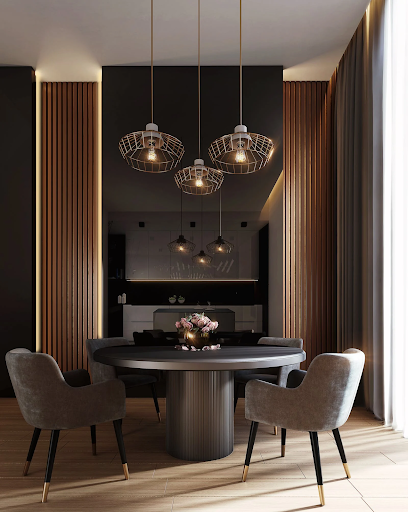Design is an integral part of our daily lives, influencing the way we live, work, and interact with our surroundings. It manifests in a myriad of ways, from the architecture that shapes our cities to the interior aesthetics that define our personal and professional spaces. Particularly, understanding design styles can be both enriching and empowering, especially when considering a style for your own space. This article addresses the intricacies of two popular styles—modern and contemporary design. Often used interchangeably, these terms represent distinct styles with their own unique attributes and historical contexts.
Modern and contemporary designs are frequently mistaken for one another due to their shared affinity for clean lines and minimalist aesthetics. However, the differences between these two styles are significant, stemming from their origins to the principles they uphold. Grasping these distinctions can help homeowners, designers, and architecture enthusiasts make informed decisions and appreciate the aesthetic considerations behind various structures and spaces. The following sections unravel the history, key characteristics, similarities, and differences of modern and contemporary design, ultimately empowering you with the knowledge to discern between these often-confused design styles.
Table of Contents
Historical Context and Evolution
Development and Time Period of Modern Design
The modern design movement began in the late 19th century and reached its peak in the mid-20th century, a period often referred to as the “mid-century modern.” This design style emerged as a direct response to the overly decorative aesthetics of the Victorian era, advocating for simplicity and functionality. Key figures such as Le Corbusier, Mies van der Rohe, and Walter Gropius made significant contributions, promoting an unadorned style that favored rational, efficient design and the use of modern materials like steel, glass, and concrete.
Development and Time Period of Contemporary Design
Contemporary design began to take shape in the late 20th century, following the postmodern design era. Specifically, what is contemporary interior design? Unlike modern design, contemporary design isn’t tied to a specific period; instead, it evolves to reflect the current design trends and technologies. Key figures in the movement include designers like Zaha Hadid and Frank Gehry, whose works incorporate innovative forms, materials, and technologies, displaying a remarkable blend of style, function, and sustainability.
Key Characteristics of Modern Design
Modern design is defined by its strategic use of natural materials such as wood, leather, and stone, which bring warmth and character to spaces. The style places great emphasis on function and minimalism, with every element serving a practical purpose and excessive decorations avoided. The color palette typically leans towards neutrals like black, white, and shades of brown and beige, often complemented by primary colors for a balanced, harmonious look. The furniture and fixtures in modern design often feature clean lines, organic forms, and lack of ornate detail, embodying the principle of “form follows function.” Notable examples of modern design include the Barcelona Pavilion by Mies van der Rohe, which showcases the use of modern materials and minimalistic aesthetics, and the interior design of the Gropius House, which seamlessly merges function and style.
Key Characteristics of Contemporary Design
Contemporary design is recognized for its eclectic use of materials, ranging from traditional options like wood and stone to innovative, high-tech materials such as stainless steel, glass, and concrete. It places an emphasis on flexibility, open spaces, and a trend-driven approach, allowing for the continuous evolution of style and function. The color palette of contemporary design can be diverse, yet it often features neutrals, black, and white, with bold and bright color accents making occasional appearances. The style of furniture and fixtures tends to be sleek and simple, with a notable absence of intricate detailing. Instead, contemporary design favors bold, geometric shapes, and asymmetric designs. Notable examples of contemporary design include Zaha Hadid’s Heydar Aliyev Center, which exemplifies the creative use of space and innovative materials, and the interiors of the New York City’s One57 residential skyscraper, renowned for its trend-driven and luxurious design.
Modern vs Contemporary Design
Similarities
Both modern and contemporary designs share an appreciation for simplicity, minimalism, and functionality. They favor uncluttered spaces, clean lines, and an absence of ornate and elaborate details. Both design styles also demonstrate a love for open spaces and natural light, promoting a sense of fluidity and connection with the environment. In terms of materials, modern and contemporary designs often employ a mix of traditional and innovative options, reflecting an embrace of the past and the future.
Differences
Modern design is strictly associated with a specific historical period (late 19th to mid-20th century) and adheres to a predefined set of aesthetic principles, such as the consistent use of natural materials and a specific color palette. Conversely, contemporary design is fluid and ever-changing, reflecting the design trends, innovations, and technologies of the current times. Its material use and color palette are far more diverse and less predictable than those of modern design. Contemporary design often embraces more experimental, unconventional layouts and forms, which is less common in modern design.
While modern and contemporary design share a mutual love for minimalism and functionality, they each hold distinct attributes tied to their unique historical contexts and design principles. Being knowledgeable about these differences can not only enrich our appreciation for architecture and interior design, but also empower us to make informed decisions when designing our own spaces. By understanding the subtleties between these two styles, we can create environments that not only meet our functional needs, but also resonate with our aesthetic preferences and the evolving trends of design.

